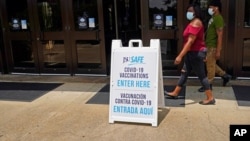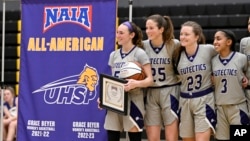Student Union
Top 5 Posts of the Year
In honor of a great 2011-2012 school year, we'll spend this week looking back at the year and some of our favorite posts (in case you missed them!). First off, our top 5 most read posts of the year...
5. How Old is Too Old to Start College?
Is there such thing as being too old to start college? Ryan thought he might be too old to start over, but quickly learned that non-traditional students are more traditional than he thought.
At AMINEF, when the counselor found out that I was 21, she assumed that I was applying for a graduate program. It was a funny misunderstanding, but at that exact moment, it struck me that I may be too old to start over pursuing my studies at a new college.
4. A Chinese Student's Story of Job-Hunting in the US
In this video, Qian shows off her talent for videography, as well as the story of a Chinese student's path to finding internships in America.
(Also check out Olena's discussion of her own experience looking for internships, and what she wishes she'd known before she started)
3. American Culture: Out of the Movies and Into Daily Reality
What happens when the dream of being in America meets the reality? Cristiana explores how well an immersion in American pop culture prepares you to actually arrive in America.
When a salesman in a fish market asked me “How are you doing, sweetie?” I was thrilled and amazed. It felt as if he had just emerged from the TV screen and spoke to me, or I had just crawled into the TV and met him.
2. 10 Ways Being a Student in the US is Different Than in Russia
Anna shares some of the things she's had to get used to about American academics. It's a list that includes everything from the number of classes (way fewer) to the prevalence of students ...umm... "collaborating" (way less).
Many Russian professors require that students take notes during the lecture or seminar. They often tell students what exactly to write down, and if they see someone is not taking notes they may ask the student to leave the classroom. In an American classroom it’s usually your choice what you want to write down or not.
1. On Being an African in the US: Navigating an Endless Web of Stereotypes
Simba takes a personal and insightful look at being African in the U.S., sharing some of the hurtful stereotypes he's encountered and thinking about why they persist.
While these comments all made me cringe inwardly in disbelief, none of them topped a remark I received while eating in the college dining hall early this semester, when somebody (Let’s call him Boy Z) remarked, “It must hurt you to see people throwing away food when so many people in Africa are starving.”
(Take a look also at the comments and responses, which are equally enlightening and interesting)
There you go. Your favorite posts of the past school year. Tomorrow I'll be getting a little less democratic and sharing MY favorite posts of the school year!
See all News Updates of the Day
With federal student aid delays, students aren’t sure what college will cost

The U.S. Department of Education’s federal student aid form (FAFSA) experienced serious glitches and delays this year.
Now, many students have been admitted to college, but don’t know how much money they’ll need to attend.
Read the story from Susan Svrluga and Danielle Douglas-Gabriel for The Washington Post. (March 2024)
Senator draws attention to universities that haven’t returned remains

More than 70 U.S. universities continue to hold human remains taken from Native American burial sites, although those remains were supposed to be returned 30 years ago.
Jennifer Bendery writes in Huffington Post that one senator has been using his position in an attempt to shame universities into returning remains and artifacts. (April 2024)
COVID forced one international student to go hungry

When Samantha (not her real name) enrolled in community college in the U.S., her family at home in South Africa scrimped and saved to support her.
But the COVID-19 pandemic hurt the family’s finances, and at one point Samantha had four on-campus jobs just to make ends meet. Many in the U.S. believe international students are wealthy sources of funding for universities, but stories like Samantha’s suggest otherwise.
Andrea Gutierrez reports for The World. (March 2024)
Tips for paying for a STEM degree as an international student

For US News & World Report, Melanie Lockert describes how to calculate the cost of a STEM degree, and where to find funding. (March 2024)
NAIA all but bans its transgender college athletes from women's sports

The National Association of Intercollegiate Athletics, the governing body for mostly small colleges, announced a policy Monday that all but bans transgender athletes from competing in women's sports.
The NAIA's Council of Presidents approved the policy in a 20-0 vote. The NAIA, which oversees some 83,000 athletes at schools across the country, is believed to be the first college sports organization to take such a step.
According to the transgender participation policy, all athletes may participate in NAIA-sponsored male sports but only athletes whose biological sex assigned at birth is female and have not begun hormone therapy will be allowed to participate in women's sports.
A student who has begun hormone therapy may participate in activities such as workouts, practices and team activities, but not in interscholastic competition.
"With the exception of competitive cheer and competitive dance, the NAIA created separate categories for male and female participants," the NAIA said. "Each NAIA sport includes some combination of strength, speed and stamina, providing competitive advantages for male student-athletes. As a result, the NAIA policy for transgender student-athletes applies to all sports except for competitive cheer and competitive dance, which are open to all students."
There is no known number of transgender athletes at the high school and college levels, though it is believed to be small. The topic has become a hot-button issue for those for and against transgender athletes competing on girls' and women's sports teams.
At least 24 states have laws barring transgender women and girls from competing in certain women's or girls sports competitions. Last month, more than a dozen current and former college athletes filed a federal lawsuit against the NCAA, accusing the sports governing body for more than 500,000 athletes of violating their rights by allowing transgender women to compete in women's sports.
The Biden administration originally planned to release a new federal Title IX rule — the law forbids discrimination based on sex in education — addressing both campus sexual assault and transgender athletes. But earlier this year, the department decided to split them into separate rules, and the athletics rule now remains in limbo even as the sexual assault policy moves forward.
Hours after the NAIA announcement, the NCAA released a statement: "College sports are the premier stage for women's sports in America and the NCAA will continue to promote Title IX, make unprecedented investments in women's sports and ensure fair competition for all student-athletes in all NCAA championships."
The NCAA has had a policy for transgender athlete participation in place since 2010, which called for one year of testosterone suppression treatment and documented testosterone levels submitted before championship competitions. In 2022, the NCAA revised its policies on transgender athlete participation in an attempt to align with national sport governing bodies, following the lead of the U.S. Olympic and Paralympic Committee.
The three-phase implementation of the policy included a continuation of the 2010 policy, requiring transgender women to be on hormone replacement therapy for at least one year, plus the submission of a hormone-level test before the start of both the regular season and championship events.
The third phase adds national and international sport governing body standards to the NCAA's policy and is scheduled to be implemented for the 2024-25 school year on August 1.
There are some 15.3 million public high school students in the United States and a 2019 study by the CDC estimated 1.8% of them — about 275,000 — are transgender. The number of athletes within that group is much smaller; a 2017 survey by Human Rights Campaign suggested fewer than 15% of all transgender boys and transgender girls play sports.
The number of NAIA transgender athletes would be far smaller.






